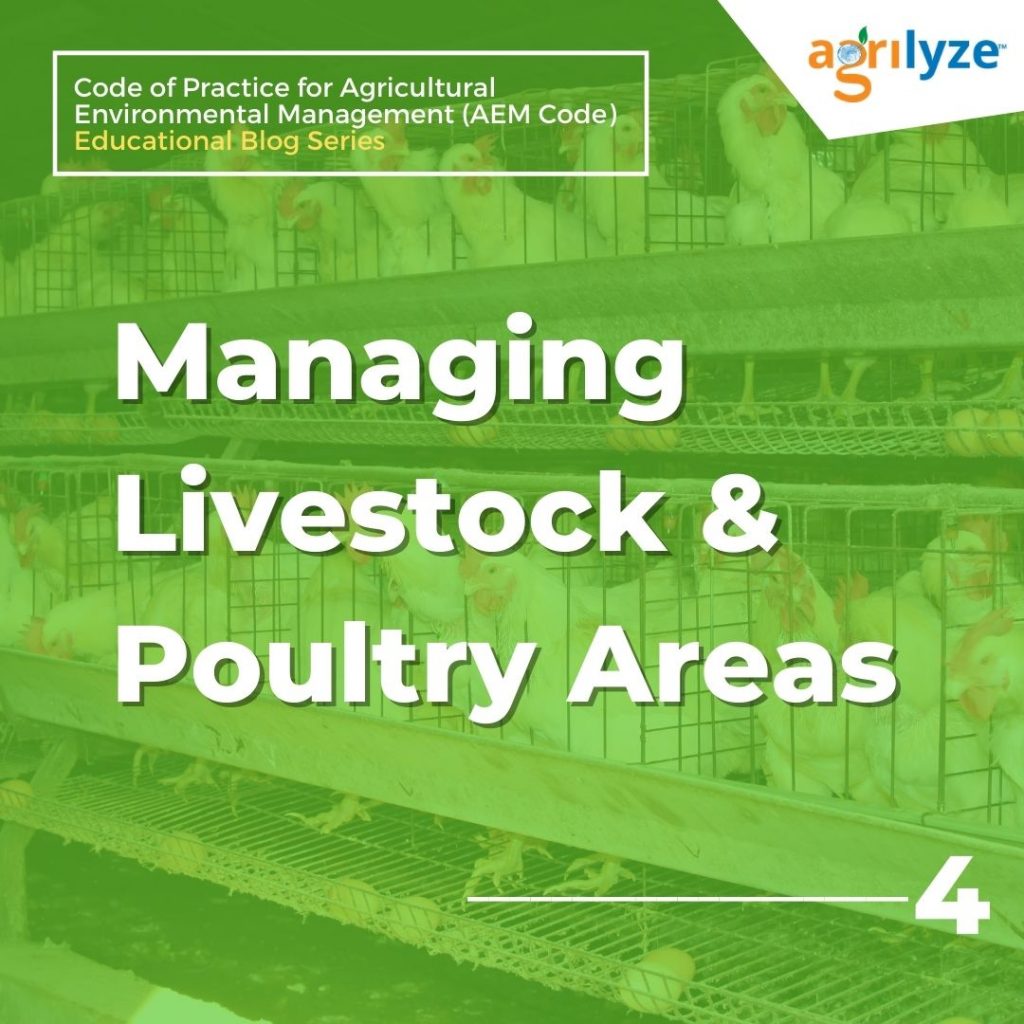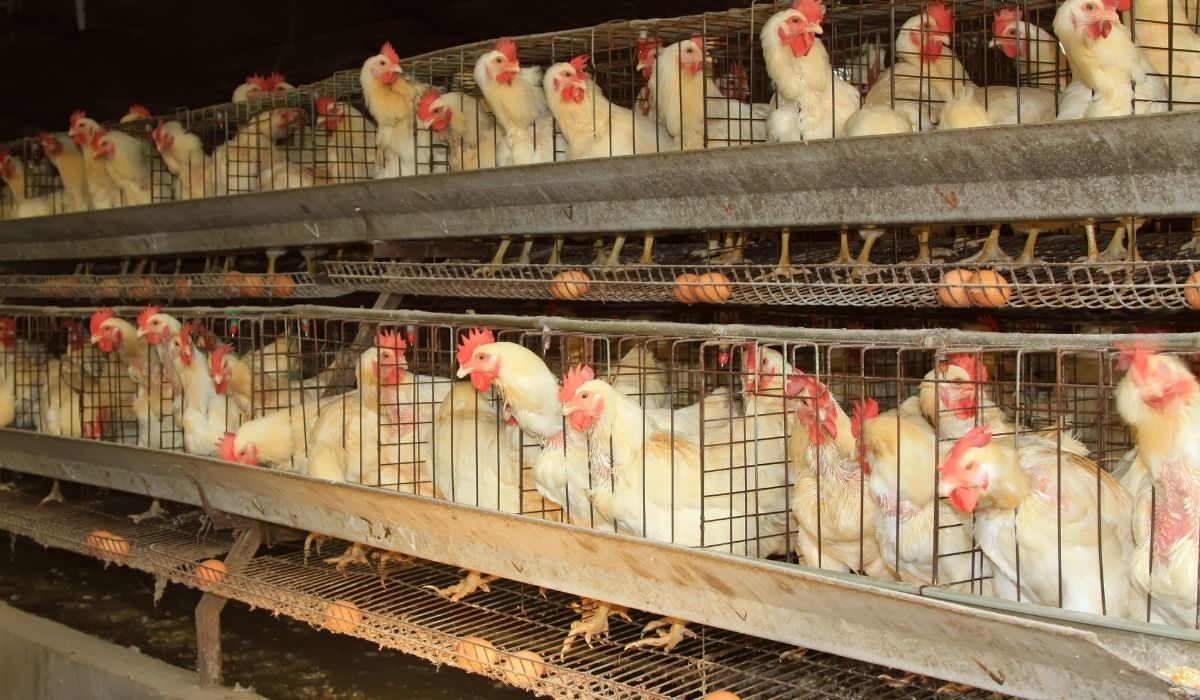Code of Practice for Agricultural Environmental Management – Livestock & Poultry Areas
There are specific requirements for confined areas around livestock & poultry, feedlots, seasonal feeding, grazing, and temporary holding areas.
A confined area is simply a space contained by structures (i.e., fences) or the land. The following rules must be met under the Code of Practice for Agricultural Environmental Management:
- Ensure livestock or poultry can access clean drinking water or a watercourse
- Properly manage accumulating manure, bedding or feed in the space to prevent contamination
- Collect and contain any contaminated by-products so that they cannot leave the area
- Ensure contaminated by-products cannot enter a watercourse, groundwater or someone else’s property
Make sure your livestock and poultry are set up in an area that meets the minimum setbacks
For seasonal feeding, grazing, and temporary holding areas, the following rules must be met:
- Reduce trampling and erosion of soil close to the watercourse
- Ensure contaminated runoff, manure, and solids do not enter the watercourse
- Don’t place livestock in areas that are prone to flooding or already flooded
- On-ground feeding locations and mobile bins should not be in areas that are prone to flooding or already flooded
- Distribute feeding locations and bins evenly in the area to prevent manure from accumulating
- Make sure on-ground feeding locations and mobile bins meet the minimum setbacks
- Ensure that your livestock and poultry are not held in a temporary space for more than 72 hours
Pain Points
Numerous physical, biological, and socioeconomic factors interact to influence animal agriculture in any region. To carefully raise livestock and poultry, various factors must be considered. From investing in a suitable shelter to installing appropriate fencing, farmers must pay special attention to daily chores as these actions contribute toward meeting the rules outlined above. Some examples of daily tasks that must be attended to:
- Cleaning out manure
- Collecting eggs
- Veterinary bills
- Measures to deter predators
- Logistical issues of slaughtering
Let’s review a few other areas of concern when it comes to keeping livestock and poultry.
Animal Health
The best things you can do to reduce disease risk is to keep your animals clean, comfortable and adequately fed and watered. By no surprise, most animals need regular health care ranging from deworming to vaccinations to hoof trimming. By following the Code of Practice for Agricultural Environmental Management, you can ensure your livestock and poultry are happy and healthy.
Biosecurity
Some animal diseases can be passed to humans and other animals, so it is crucial to minimize the risks by following well thought out biosecurity and health management practices. Biosecurity can be described as any implementation of actions that can reduce chances for introducing and spreading infectious agents that can cause animal disease.
Take, for example, poultry growers. Because poultry flocks’ size and location are typically concentrated in today’s commercial production operation, the risk of disease as associated with this type of production can be high. By developing and practicing daily biosecurity procedures in combination with best management practices like the AEM Code on poultry farms, we can reduce the possibility of introducing infectious diseases like Avian Influenza, Exotic Newcastle and others.
Some simple ways to avoid cross-contamination include wearing clean clothes and boots, washing hands with warm water and soap or using hand sanitizer before and after handling any animals. It is advisable to follow the specific requirements within the AEM Code as disease and pests can:
- Reduce productivity
- Reduce the value of animals and products
- Reduce domestic consumption
- Increase animal health and welfare issues
- Increase veterinary and labour costs
- Reduce the producers’ and transporters’ incomes
- Close export markets
- Negatively impact the environment and human health
Animal Welfare
Animal welfare is another significant challenge. Abiding by the Code of Practice for Agricultural Environmental Management is one way to get on the right track toward protecting animals and their welfare and health. The system is a rational way to meet the animals’ needs while helping to protect the environment.
The BC government supports animal welfare by:
- Providing educational sessions to help increase consumer knowledge of the animal welfare challenges facing the agriculture industry today
- Growing awareness for production practices so that together we can support animal welfare
- Promoting scientific investigations to identify and address potential gaps
- Monitoring issues and developing practical solutions to ensure a proper governance framework for animal welfare is in place
- Making sure farms have suitable animal housing, and are following regulations with regards to cleanliness, and clean water
To learn more, visit https://www2.gov.bc.ca/gov/content/industry/agriculture-seafood/animals-and-crops/animal-welfare/14330.
How Agrilyze Can Help
- “Map Your Farm” to understand setbacks and other relevant map-based constraints
- Track daily tasks and provide auditable data
- Analyze data over time to understand how changes impact the farm
- Create and assign tasks to ensure issues are resolved in a timely fashion
- Integrate data from various systems into one dashboard
- Leverage image recognition AI to recognize hazards and security risks
- Track digital systems and alert when they stop working
- Store and access best practices and other guides within the software
For an excellent overview of biosecurity basics for poultry growers, check out this resource – https://extension.uga.edu/publications/detail.html?number=B1306&title=Biosecurity%20Basics%20for%20Poultry%20Growers.
If you have feedback about this post or would like us to explore a particular topic, please let us know by sending an email to [email protected].
Read the Code of Practice for Agricultural Environmental Management – Introduction (with infographic) – https://agrilyze.ca/code-of-practice-for-agricultural-environmental-management-introduction/



